For travelers and outdoor enthusiasts planning a visit to the Grand Canyon, hiking the South Kaibab Trail offers an unforgettable adventure into one of the world’s most stunning natural wonders. This trail is unique—steep, challenging, and breathtakingly beautiful—but it demands respect and preparation to ensure safety and enjoyment. Drawing from expert insights and years of experience, this guide provides eight vital tips to help hikers navigate the South Kaibab Trail confidently and responsibly.
Whether you are an avid hiker or a first-time visitor, understanding the trail’s characteristics, necessary gear, and safety considerations will enhance your experience and help you avoid common pitfalls. This comprehensive guide also integrates useful travel tips for those staying near Southern Utah’s popular vacation rental destinations, making it an invaluable resource for your Grand Canyon trip.
Why the South Kaibab Trail Is Unlike Any Other
The South Kaibab Trail is the fastest route from the South Rim to the Colorado River, descending approximately 4,800 feet over just 7 miles. The steepness of this trail makes it one of the most physically demanding hikes in the National Park system. Even experienced hikers will find the rapid elevation loss challenging, especially on the return ascent.
Unlike many other trails, the South Kaibab Trail offers minimal shade, scarce water sources, and rugged terrain that requires careful planning. It’s not a trail for casual strolls; it demands respect, preparation, and awareness of your physical limits.
For those staying in Southern Utah vacation rentals, such as those offered by Stay Copper Rock, the Grand Canyon is a rewarding day trip or overnight adventure. Combining a stay in comfortable, well-appointed rental homes with a day on this trail can create a truly memorable experience.
Tip #1: Bring Trekking Poles for Knee Support
One of the most common complaints from hikers on the South Kaibab Trail is knee pain due to the steep downhill sections. Trekking poles are a game-changer for this trail. They help distribute weight more evenly, reducing stress on the knees and providing stability on uneven surfaces.
If trekking poles are not part of your usual hiking gear, this trail is the perfect reason to start using them. The poles can significantly improve your comfort and reduce fatigue, especially during the descent. They also help maintain balance on rocky switchbacks and loose gravel sections.
Investing in adjustable trekking poles with comfortable grips will make the hike safer and more enjoyable, allowing you to focus on the stunning canyon views rather than aches and pains.
Tip #2: You Must Take the Park Shuttle to the Trailhead
The South Kaibab Trailhead is accessible only by the Grand Canyon’s free shuttle system. Private vehicles are not permitted to park at the trailhead, so planning your transportation is essential.
The primary shuttle route is the Kaibab (orange) shuttle, which runs from the Visitor Center eastbound directly to the trailhead. It is crucial to board the eastbound shuttle; the westbound route loops back to the Visitor Center and will not take you to the trailhead.
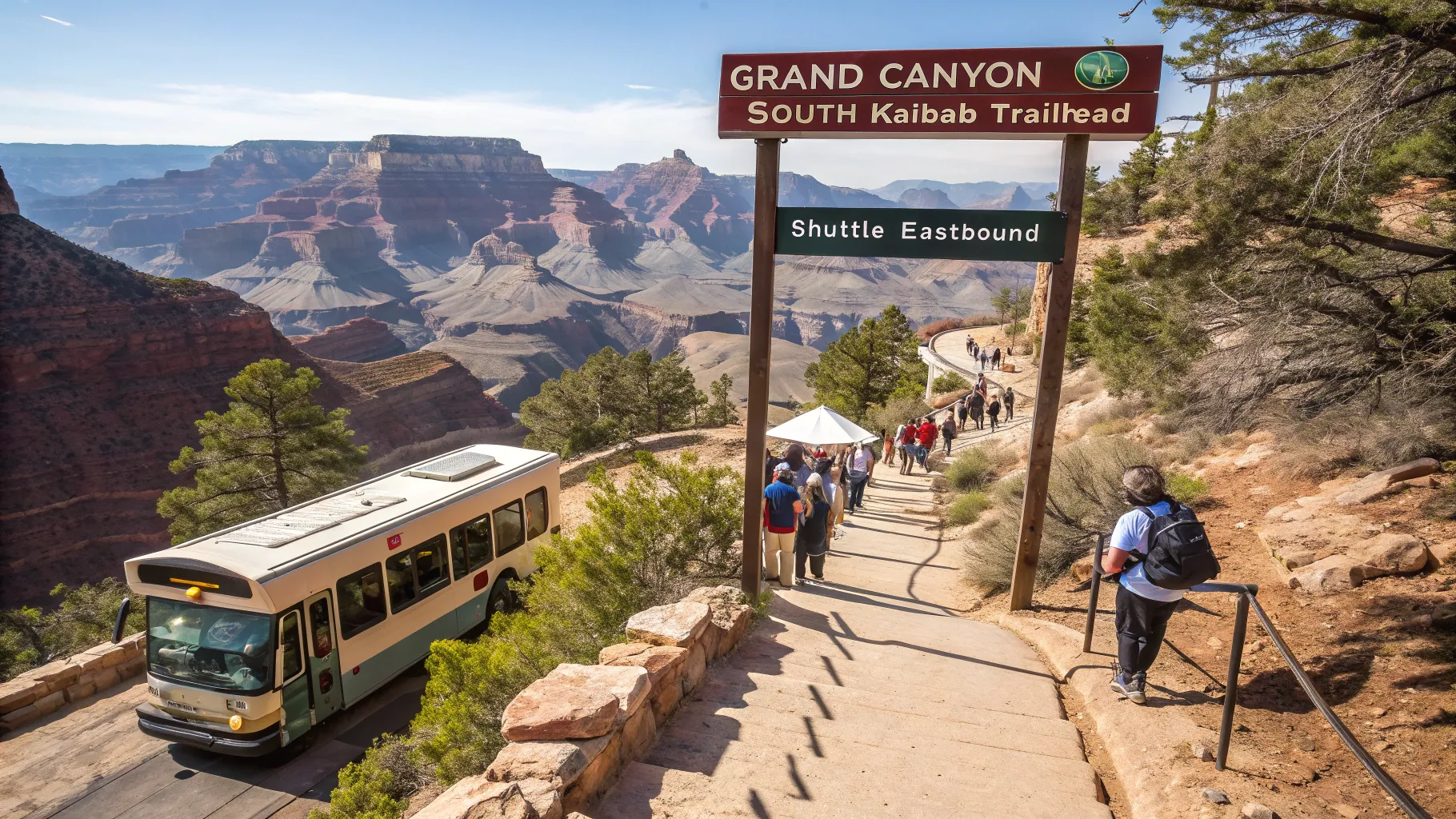
For early risers and those wanting to beat the crowds and heat, the Hikers Express Shuttle is an excellent option. It runs earlier than the regular shuttle, starting around 5 to 6 a.m., and stops at several lodges and the Visitor Center before reaching the South Kaibab Trailhead. This shuttle is particularly popular during peak hiking seasons.
Since shuttle service is mandatory year-round, make sure to pack all your hiking essentials in your backpack before leaving your vehicle or lodging. This shuttle-only access helps preserve the environment around the trailhead and manage visitor flow safely.
Tip #3: Carry Plenty of Water and a Water Filter
Water is the most critical item on your packing list for the South Kaibab Trail. There is no water available along the trail until you reach the Colorado River at the bottom of the canyon. The National Park Service recommends carrying about four liters of water per person, which may seem like a lot, but it is necessary given the trail’s length, steepness, and often hot conditions.
Even though the hike down is mostly downhill and may require less exertion, the return ascent is strenuous and demanding. Dehydration is a common cause of hiking emergencies in the Grand Canyon, so err on the side of caution and bring more water than you think you’ll need.
Additionally, a reliable water filter is indispensable if you plan to camp or stay overnight at the bottom of the canyon. Due to frequent pipeline breaks, water availability at the rim and along some trails can be inconsistent. Filtering water from the Colorado River or campground sources ensures you have safe drinking water throughout your trip.
Tip #4: Expect Mules and Know How to Share the Trail
The South Kaibab Trail is a corridor trail that mules use regularly to transport supplies and visitors between the rim and Phantom Ranch. The presence of mules means hikers should be prepared for encounters with these animals on the narrow trail.
Mule traffic can affect the hiking experience in several ways:
- Trail Conditions: Expect to see mule droppings and urine puddles along the path, which can be unpleasant and require careful foot placement.
- Passing Protocol: When mules approach, hikers should step off the trail on the hillside side (not the canyon edge) and wait quietly until the animals pass. Always follow instructions from the wranglers managing the mule trains.
Respecting the mule traffic not only keeps everyone safe but also preserves the trail’s integrity and the experience for all visitors.
Tip #5: Don’t Hike Further Than You Can Safely Return
One of the biggest mistakes hikers make on the South Kaibab Trail is going too far down and underestimating the difficulty of the return climb. Hiking downhill is deceptively easier, so it’s tempting to push beyond your limits. However, the uphill return is much more physically demanding and time-consuming.
To hike safely, it’s vital to set a turnaround point that matches your fitness level and the time you have available. Some recommended turnaround spots include:
- Ooh-Aah Point: A short 1.8-mile round trip with about 700 feet of elevation loss. It offers stunning views and a taste of the trail’s beauty without overexertion.
- Cedar Ridge: About 3 miles round trip with 1,120 feet of elevation loss. This spot provides 360° views of the canyon and is the recommended summer turnaround point by the park for safety.
- Skeleton Point: A longer 6-mile round trip with approximately 2,000 feet of elevation loss, suitable for off-season hikes when temperatures are cooler.
Planning your hike with a clear goal and respecting these recommended distances can prevent exhaustion and emergency situations.
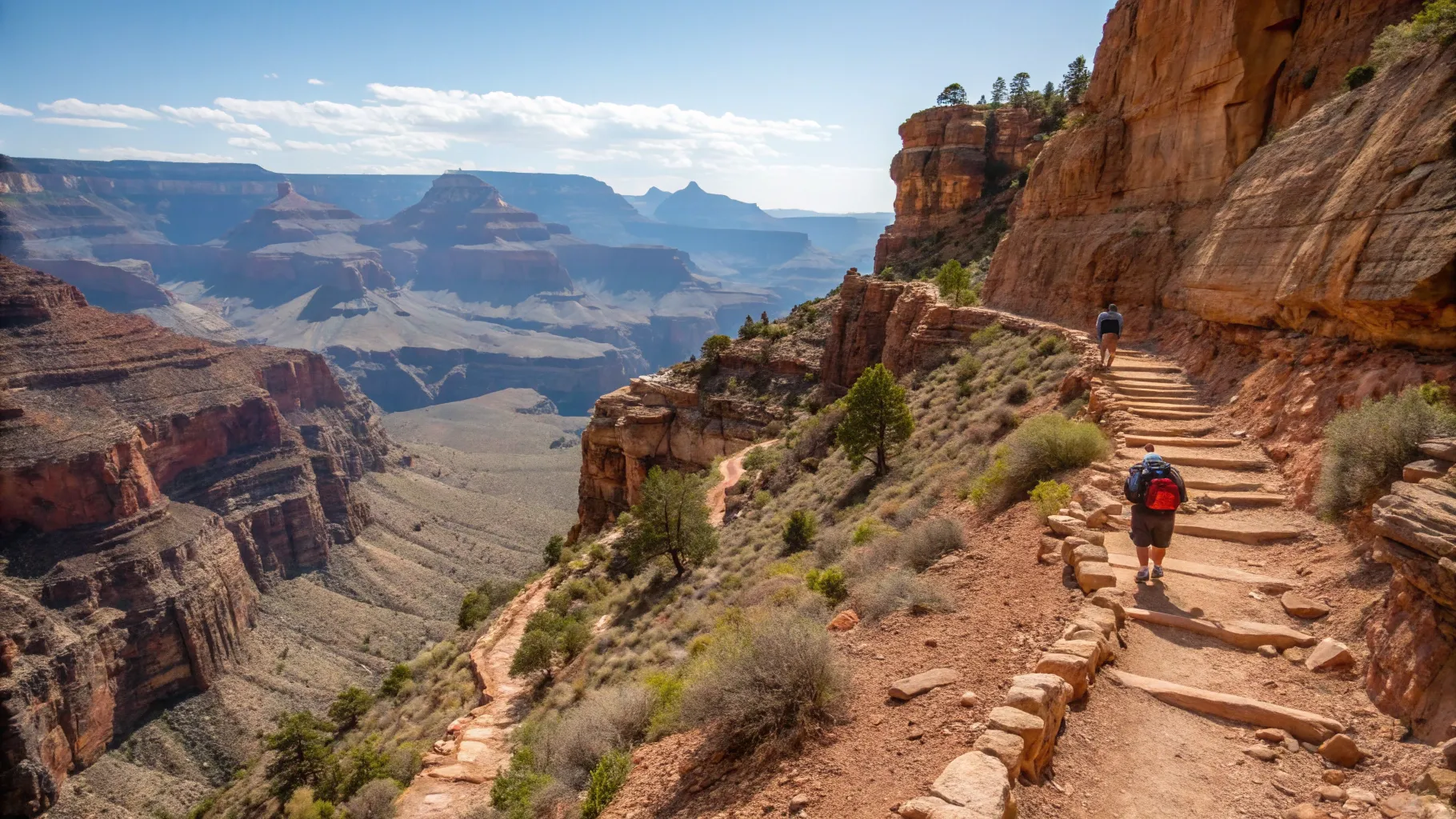
Tip #6: Prepare for Minimal Shade and Exposure to the Elements
The South Kaibab Trail traverses ridgelines with very little vegetation, meaning hikers are exposed to the sun and elements almost the entire way. Except for a few small sections with sparse trees near Cedar Ridge, shade is scarce.
This exposure increases the risk of sunburn, heat exhaustion, and dehydration. Wearing sun-protective clothing, a wide-brimmed hat, and applying sunscreen liberally are essential steps. Lightweight, breathable fabrics that wick moisture will also help regulate body temperature.
Carrying sunglasses and lip balm with SPF protection can further protect against the harsh conditions. Since the trail is exposed, always keep an eye on weather forecasts and be prepared for sudden changes, especially in shoulder seasons.
Tip #7: Avoid Hiking Between 10:00 a.m. and 3:00 p.m.
Midday on the South Kaibab Trail can be brutally hot and dangerous, especially during the summer months. Temperatures at the canyon bottom can soar 30 degrees higher than on the rim, making hiking during this time risky.
Starting your hike early—often before sunrise—is the best way to beat the heat. Many hikers begin as early as 4:00 or 5:00 a.m. with headlamps to ensure they reach the bottom or their turnaround point before the temperatures spike.
The National Park Service recommends hikers be at the canyon bottom by 10:00 a.m. during summer to avoid the worst heat. If your plans involve day hiking only to spots like Cedar Ridge or Ooh-Aah Point, an early morning start still ensures a comfortable return before midday heat.
For those staying in Southern Utah, early starts also mean you can enjoy cooler temperatures and fewer crowds, enhancing the overall experience.
Tip #8: Understand That There Are No Camping Options Along the Trail
Unlike some other Grand Canyon trails, the South Kaibab Trail does not offer camping sites along the route. If you intend to camp overnight, you must hike all the way to the bottom where Bright Angel Campground and Phantom Ranch provide accommodations.
This design makes the South Kaibab Trail primarily a fast descent route rather than a multi-day hiking experience with stops along the way. Because of the lack of shade, water, and rest areas, lingering on the trail is not advisable.
For multi-day hikes with camping, consider combining the South Kaibab Trail with other trails that offer designated campsites. Otherwise, plan your itinerary to either day hike to safe turnaround points or descend fully to the bottom to stay overnight.
Planning Your Grand Canyon Adventure
Hiking the South Kaibab Trail is a rewarding but demanding experience that requires careful preparation and respect for the canyon’s harsh environment. For travelers staying in Southern Utah, combining a Grand Canyon hike with a stay in a luxury vacation rental, such as those offered by Stay Copper Rock, ensures a perfect blend of adventure and relaxation.
For those seeking other hiking options or detailed itineraries, there are excellent resources available that cover Grand Canyon trail guides, including how to hike to Cedar Ridge and beyond. These guides provide step-by-step descriptions, elevation profiles, and tips to maximize safety and enjoyment.
Southern Utah is also home to other spectacular parks like Zion and Bryce Canyon, each with its unique trails and attractions. Exploring these alongside the Grand Canyon offers a full spectrum of Utah’s natural beauty. For more hiking adventures near your vacation rental, check out our guide to hidden hikes in Southern Utah and top activities in Zion National Park.
Frequently Asked Questions About Hiking the South Kaibab Trail
How long does it take to hike the South Kaibab Trail?
The hike down to the Colorado River typically takes 3 to 4 hours at a moderate pace. The return ascent can take longer due to the steep climb. Day hikes to points like Ooh-Aah Point or Cedar Ridge can be completed in 2 to 3 hours round trip.
Is the South Kaibab Trail suitable for beginners?
The trail is physically demanding due to its steepness and exposure. Beginners should consider hiking only to Ooh-Aah Point or Cedar Ridge and ensure they are well-prepared with water, sun protection, and early start times. Consulting with park rangers about your fitness level is recommended.
Can I drive my own car to the South Kaibab Trailhead?
No, private vehicles are not allowed at the South Kaibab Trailhead. Visitors must use the Grand Canyon’s free shuttle system year-round.
Are dogs allowed on the South Kaibab Trail?
Pets are not permitted below the rim on the South Kaibab Trail due to safety concerns and fragile environments.
What should I pack for hiking the South Kaibab Trail?
Essential items include trekking poles, at least four liters of water per person, sun protection (hat, sunscreen, sunglasses), sturdy hiking shoes, snacks, a water filter if staying overnight, and layers for changing temperatures.
Final Thoughts
The South Kaibab Trail is a highlight of any Grand Canyon visit, offering panoramic vistas, exhilarating descents, and a true sense of wilderness adventure. By following these eight essential tips, hikers can prepare themselves physically and mentally for the challenge, ensuring a safe and unforgettable journey.
Whether staying nearby in one of Southern Utah’s exceptional vacation rentals or planning a dedicated Grand Canyon trip, embracing the trail’s demands with respect and preparation leads to a rewarding outdoor experience. For those looking to extend their adventure, Southern Utah’s national parks provide endless opportunities to explore the spectacular Southwest landscape.
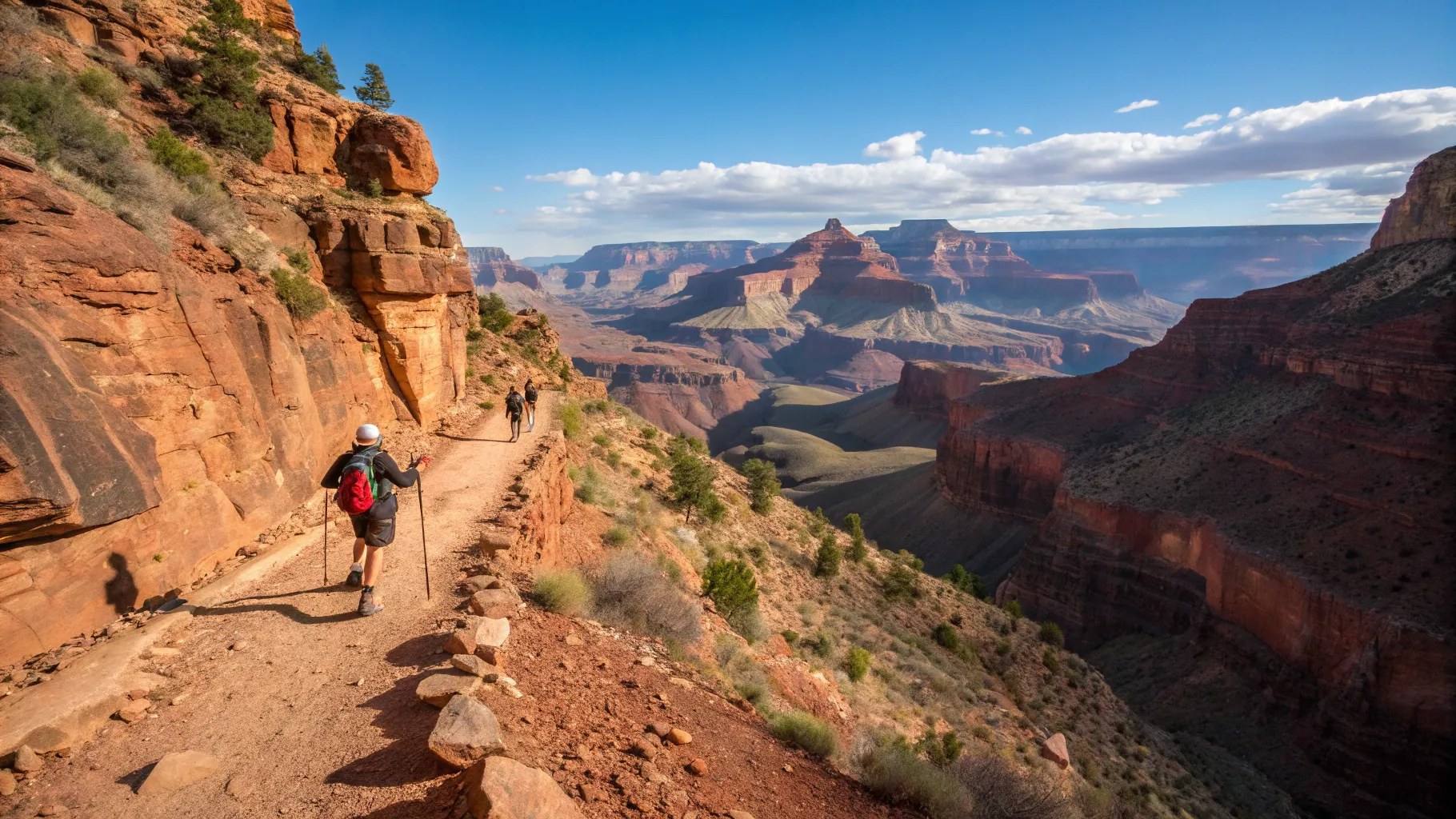

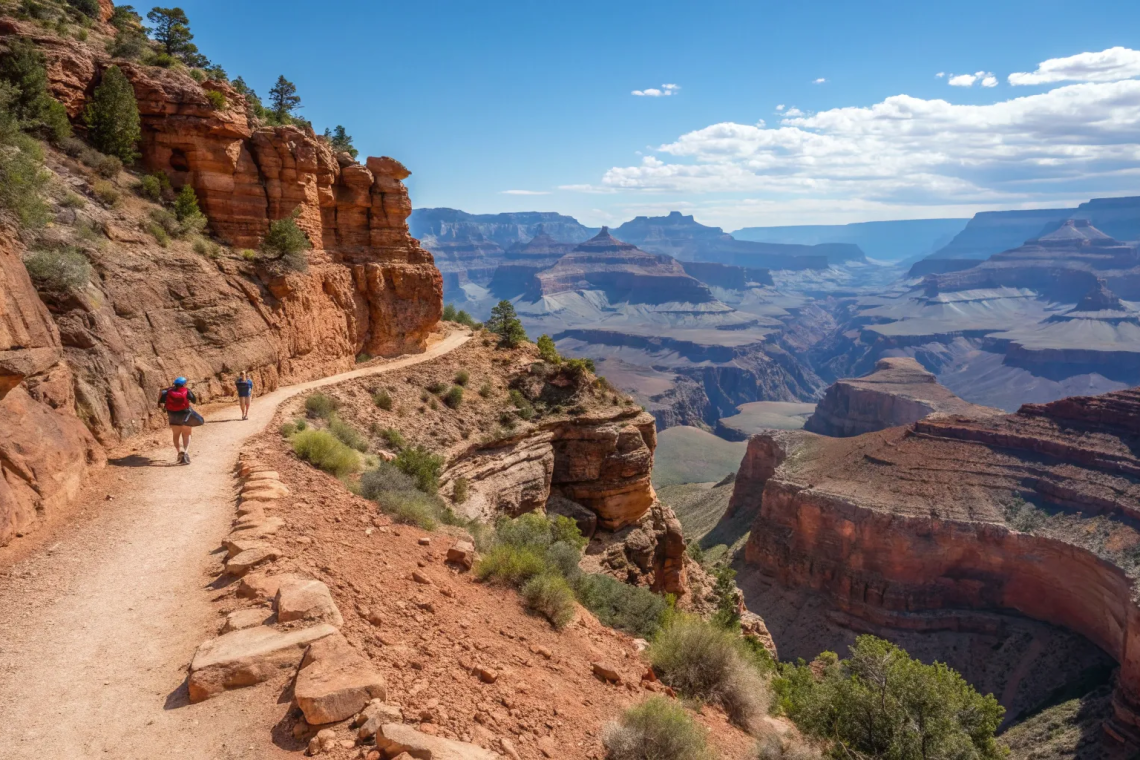



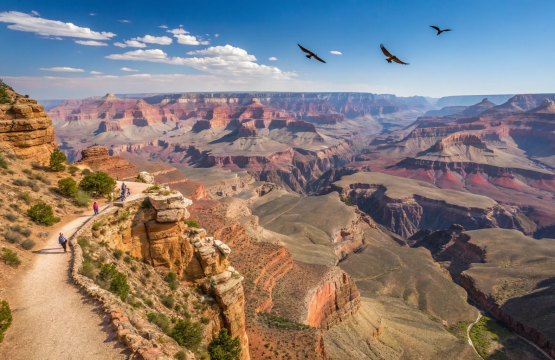
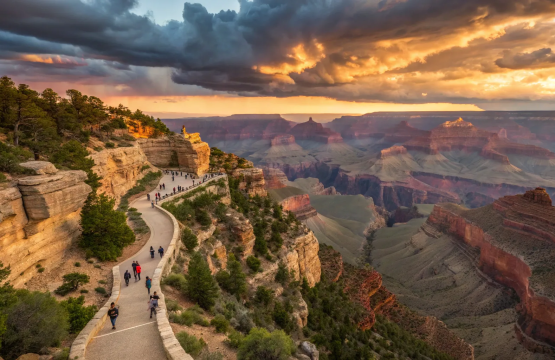
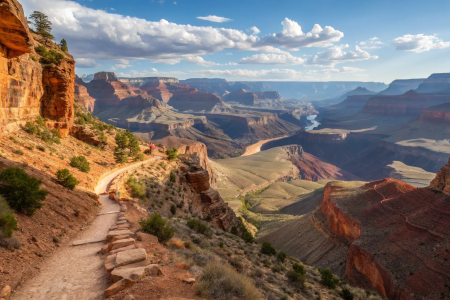
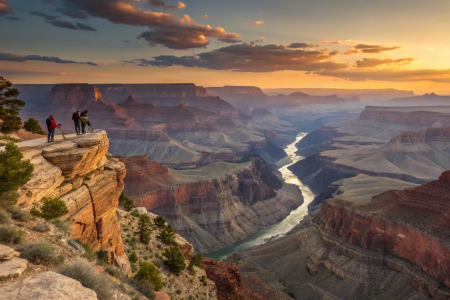
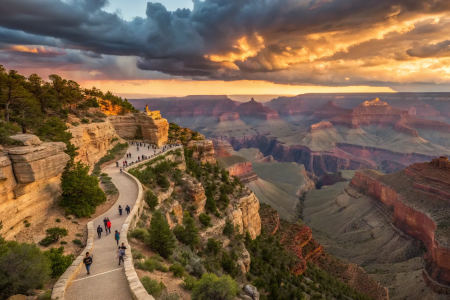

Join The Discussion